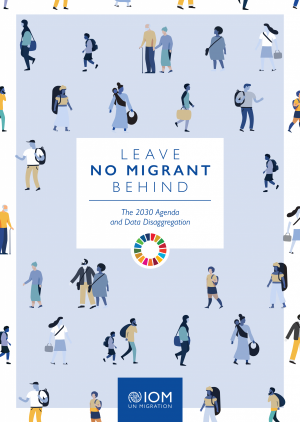Executive Summary
In order to leave no one behind, migrants must be considered across efforts to achieve the Sustainable Development Goals (SDGs), as these seek to realize the human rights of all without discrimination. The COVID-19 pandemic has revealed and often exacerbated inequalities around the world, reminding us how important it is for policy to be inclusive of all population subgroups, including migrants.
Meanwhile, migrants are also key actors in sustainable development. Around the world, they make vital contributions to help progress the SDGs, whether these focus on offering high-quality health care, boosting household income or increasing productivity in destination economies. Understanding the many positive links between migration and the SDGs can be complex, yet it is necessary to create migration governance that boosts development.
Data disaggregation is key to this. SDG Target 17.18 calls to increase the availability of “high-quality, timely and reliable data disaggregated by income, gender, age, race, ethnicity [and] migratory status”. This reflects a growing understanding that disaggregation of data is an important way to ensure inclusiveness for specific population subgroups. It also enables us to identify the many contributions of migrants to development.
To date, migrants are largely invisible in official global SDG data. In 2020, countries had disaggregated by migratory status only one of the recommended SDG indicators at the global level (8.8.1). This means that as we rapidly approach 2030, we still do not know what the effects of the SDGs are on migrants, whether they are being left behind and to what extent. Further still, the COVID-19 pandemic has negatively impacted traditional data collection and SDG reporting around the world, meaning it is even more difficult to identify migrants in development data.
At the same time, many countries regularly generate national disaggregated data. This shows that while disaggregation of SDG data may be a challenge, many countries already disaggregate some key data in different sectors for national use.
Overall, there is a need to boost data disaggregation by migratory status, responding to the above challenges and building on existing good practices. It is important to improve data frameworks to help identify migrants who may be in greatest need and to reach the furthest behind, as well as to understand migrants’ contributions to sustainable development. This Guide responds to this need by providing user-centric guidance on disaggregation of SDG indicators by migratory status. It is aimed at practitioners across contexts who work with international migration and/or SDG data.
